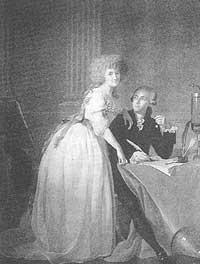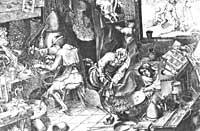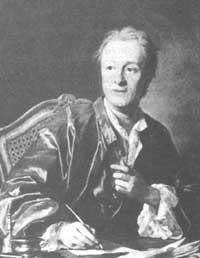Antoine Laurent De Lavoisier
1991/11/01 Azkune Mendia, Iñaki - Elhuyar Fundazioa Iturria: Elhuyar aldizkaria
This French scientist, considered the father of modern chemistry, was born in Paris on 26 August 1743. His father, a rich lawyer, expected his son to follow the law, but listening to Lacaille's astronomical lectures he began to devote himself to science. After studying some geology, he devoted himself entirely to chemistry.
As soon as he began his chemical research, he realized the importance of measurement accuracy. In 1764, for example, he warmed up to study the composition of the plaster and drew water, weighing precisely the water obtained.
Lavoisier also took care of the welfare of society. In 1760, for example, he worked on a system to improve the lighting of the villages and later surprised everyone with his work Mémoire sur le meilleur système d’éclaraige de Paris. It is no wonder that in 1768 he was appointed a member of the French Academy of Sciences.
In 1770 he invented new brine preparation systems. These advances were of great importance since the brine was then the raw material needed to obtain gunpowder.
In 1771 he married the 14-year-old daughter of a wealthy tax collector and his intelligent wife helped him a lot in his work.

In 1772 Lavoisier began to heat in the air different substances. He also heated the diamond until it disappeared and the container was filled with carbon dioxide. The diamond, therefore, was composed mainly of carbon. Lavoisier proved that without air the diamond was not burned. He also burned phosphorus and sulfur and found that the products obtained weighed more than the original. Therefore, he considered that in the streams some substance of the air was added, since the flogisto could not have a negative weight.
To demonstrate his idea, he heated tin and lead in a limited amount of air. The oxide layer appeared on the metals and was heavier than the metal itself. But Lavoisier proved that the weight of the whole formed by metal, its rust and the air was not altered. Therefore, the weight that gained the rust would probably take off into the air. If the air was removed, the closed container would be empty.
As Lavoisier thought, when he opened the container the air entered the interior. It was due to the combination of rust, metal and air and there were no losses of flogisto. The theory of the flogisto decayó and Lavoisier showed that matter is not produced or destroyed. Change of state by chemical processes.
In 1774 Priestley went to Lavoisier in Paris. He told him about his trials on flawed air. Lavoisier reinvented Priestley's essays and taught him that the idea of floating air was wrong. Metals were combined with air gas forming oxides. In the air there were two gases: one fired and the other did not. He called oxygen the first (in Greek means acid generator because he believed that all acids had) and the second azoe (means not alive in Greek). Later in 1790 Chapal called the second nitrogen.
Around 1780 Lavoisier took care of the progress of agriculture. In the society Ferme generale invested half a million pounds. This company had an agreement with the French government to collect taxes and keep as a winner at a higher level. Lavoisier used these decisions in his essays.
In 1780 journalist Jean Paul Marat asked for his entry into the Academy of Sciences and Lavoisier tried not to enter because his works had no scientific value.
Lavoisier, after establishing modern chemical bases, was concerned about his nomenclature. Therefore, in 1787 he published with the collaboration of Berthollet and Forcroy the book Methods for Chemical Nomenclature.
Soon after, in 1789 he published his new doctrine in the book Traité élémentaire de chimie, showing, among other things, the lists of the chemical elements that existed until then and the substances that had not yet been broken down. It was the first modern chemistry textbook.
When the revolution arose in 1792, Lavoisier was imprisoned. In the trial Jean Paul Marathon made him a harsh accusation in revenge of the problem of the Academy of Sciences. Although the revolutionary Marat himself was assassinated in July 1793, Lavoisier, his father-in-law and other members of Ferme General were guiltinated on May 8, 1794. Mathematician Lagrange noted that Lavoisier was abandoned at a headless time, but it would take a hundred years to create a species.

Gai honi buruzko eduki gehiago
Elhuyarrek garatutako teknologia






